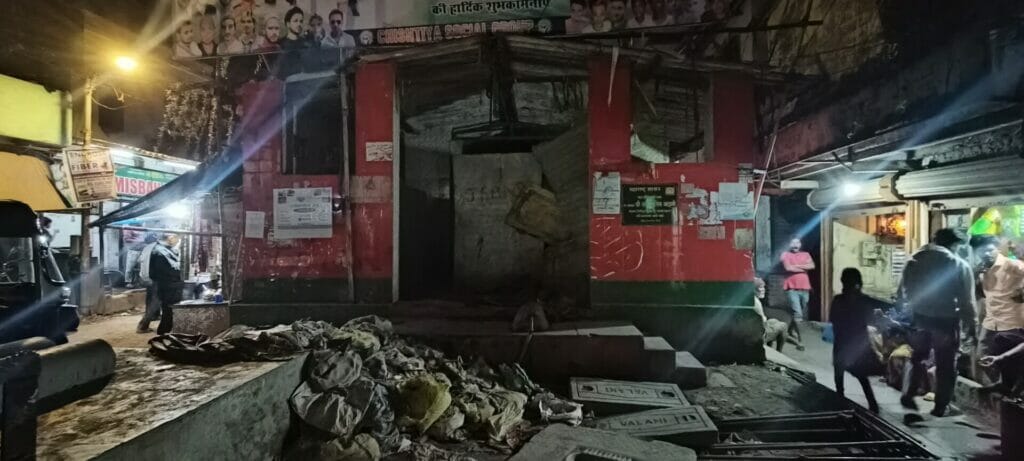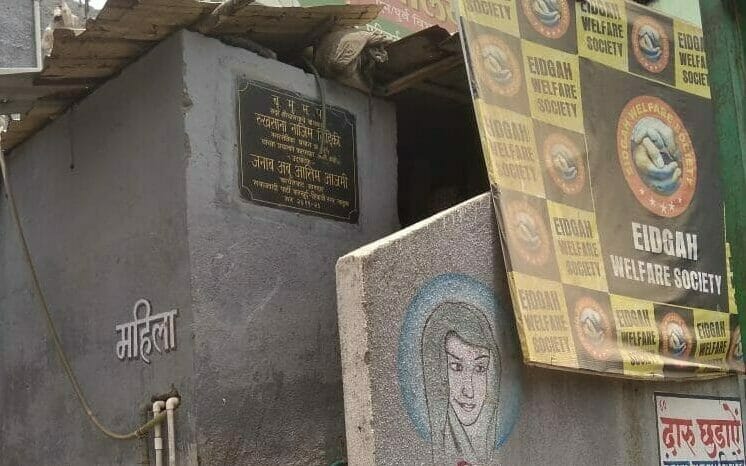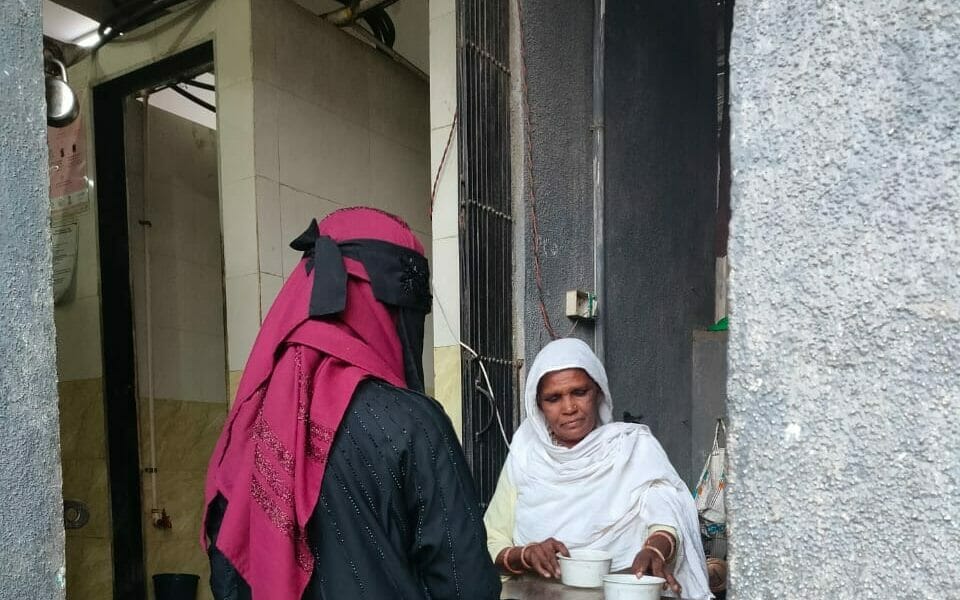We live in Shivaji Nagar, which is part of Govandi, a heavily populated neighbourhood. We have always known that there is toilet scarcity here. After participating in a survey, we realised the situation is far more problematic than the lack of toilets. There is a total of 152 toilets, of which 27 are in the peripheral area, and the remaining 125 toilets are located in the site and services plots.
However, only 96 toilets out of the total are functioning, and that is a major issue for us. This study also showed us many other problems we never knew about and never thought about solving.
Our roles in the research
To know more about the community toilet issues and understand residents’ perceptions and views about ideal community toilets, we planned focused group discussions (FGDs). We selected six areas with different conditions – Rafi Nagar, Indira Nagar, Padma Nagar, Shivaji Nagar plots, Budh Nagar, and Baiganwadi plots.

We started mobilising the community a week before the FGD. We took consent of participants and collectively decided the date and timing for this discussion. One hurdle or limitation in FGD was that we didn’t get a good gender mix group. That is because transgender people were not ready to disclose their identity as they were worried others would tease and harass them. Parents of transgender children were also reluctant to accept that their child is trans.
Read more: Community toilets in Shivaji Nagar are inadequate and unevenly distributed
After the FGDs, we were trained to make maps, understand different types of maps, and also participated in a workshop in data collection and data entry so that we could fill residents’ responses during the survey.
Different areas, different problems
In FGDs, we saw different types of toilets and heard different views and responses. For example, in Rafi Nagar, in every gali (lane) there is a single toilet constructed by the people. Outsiders often referred to it as the slumdog toilets. It is poorly constructed with wooden planks. There is no electricity connection, and the entrance is very risky for the elderly, pregnant women and people with disabilities. One child shared his experience about how he slipped near the toilet once.

He also said this is very common, and most kids have experienced this type of incident. One lady told us that she has polio and is unable to use these washrooms; hence, she has to go outside the cluster, which is also difficult for her, but she prefers the stable toilet rather than the poorly constructed toilet near her house.
Read more: Many are averse to using public toilets in Mumbai. Here’s why.
In Shivaji Nagar plots, people said that there was no electricity connection. Men often stand at the corner of the toilets and continuously harass the females. Sometimes men use this site for drug consumption, making it unsafe for women and children. Toilets are basically a business here and a profitable one in the area. Most of the time, goons are involved in this business.
Due to this, people are scared to talk about their issues and problems in the community. In the peripheral areas, the population is more than the number of toilets. Hence, we need more toilets there. Most families can’t afford to build toilets inside their houses because they are very small, and it is costly to build and maintain them. So, many parents allow their children to defecate in the open, which causes various kinds of infections and diarrhoea.
Knowing and understanding problems better
The FGDs were good, but the mapping exercises and survey of all toilets were eye-opening for us. First, we did a pilot with the researcher. Later, we conducted the survey on our own with the toilet caretakers and community regarding the condition of toilets, their issues and demands. In this process, we realised that the problems were common; they affected other residents and us.
In the month of May 2022, we started our survey. 10 youth members from different active groups of Apnalaya were selected. We were selected as we lived in the different clusters in Shivaji Nagar and understood each cluster’s peculiar issues better. We noticed that during the survey, the community responded to us comfortably as they knew us. The survey went on for ten days; the rest was research analysis and data entry.
The issues that affected the community were, hygiene, sanitation, the safety of women, the elderly, transgender, and children and the biggest problem – fewer toilets. Due to the long lines, adolescent girls face harassment and teasing while waiting.

Sometimes men throw stones at windows, and sometimes, they peek, which is very uncomfortable for women. Some time ago, a rape case happened in Delhi in a community toilet, and after that, people got even more scared to use community toilets. It affects girls’ and women’s mental health. Most of the time, the girls were late for their school as they had to wait for the water supply to start and fill the water and store it.
Read more: Why flawed planning may have a role in annual outbreak of diseases in Mumbai
Often it led them to drop out.
Transgender communities don’t have separate toilets, and the community often doesn’t allow them to use the same toilets. Women feel awkward due to their presence; hence they don’t allow them, and men harass them if they use their toilets.
Some newly constructed toilets are available in some areas, but people are not using them due to fear of goons. In other areas, there are structural issues with toilets making them particularly dangerous for the elderly, children and people with disabilities.
Hygiene, sewage disposal and sanitation issues were common and created a lot of problems for caretakers in maintaining cleanliness. In some toilets, there are no caretakers, which is one of the reasons for non-functioning toilets. The majority of the people in the peripheral areas used dumping grounds for defecation.
What we learnt about toilets and health
Through this research, we gained knowledge regarding toilets, sanitation and hygiene, and now we want to share these insights with our community. Most people think these are small problems that can be neglected, but it is risky. People from different gender and age criteria are affected differently because they all have unique problems.
People have been facing these problems for a long time and continue to face them on a daily basis. Through this research, we have some idea of what an ideal toilet should have. First and foremost, there should be a sufficient number of toilet seats for men and women.
There should be provisions for the elderly, persons with disability and for the transgender community. By discussing with the community, we have to develop a pass system for regular users and visitors who can also use it by paying some amount.
We would like to demand that toilets be free for vulnerable groups. We also think proper guidance, awareness and community discussions can bring changes to the community toilets and improve people’s lives. Toilets can, and should, become a safe place for all their users.